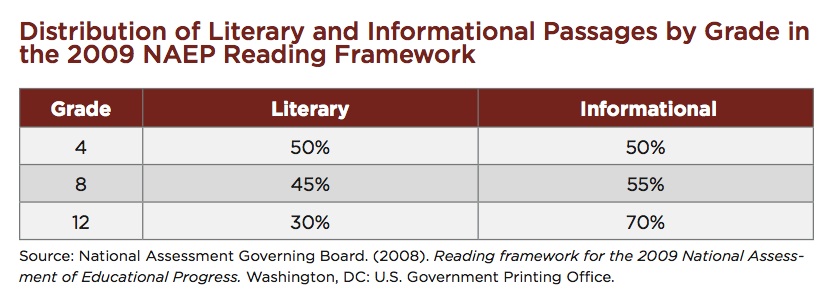Shakespeare and the Common Core
January 6th, 2013Across the United States, education is undergoing a sea-change (into something rich and strange) surrounding the adoption of something called the Common Core State Standards.
Standards are simply a list of what students should be able to do by the end of each grade. Traditionally, these have been defined by states, with a requirement for them to do so by the No Child Left Behind Act of 2001. States still define their own standards, but, in an unprecedented act of coordination, 45 states (plus the District of Columbia and a few of the territories) have adopted the Common Core as their state standards. Full adoption has been targeted for next year, though New York has started phasing in significant portions of it this year.
Love it or hate it, the Common Core represents a new direction in pedagogical thinking, both qualitatively and quantitatively. Personally, I think the Common Core standards are a lot better than the existing New York State Standards, but we’re going to have to suffer through a difficult transition period before we can reap the benefits of that improvement. Right now is probably the most difficult time, as we have to deal with students who are not starting on what the new structure defines as grade-level, a lack of Common Core-aligned teaching materials, and uncertainty surrounding precisely how these new standards will be assessed. May you live in interesting times.
As with anything new and complex, there are going to be a number of misconceptions floating around about it. One of the most prevalent I’ve seen is that the Common Core eliminates (or at least de-emphasizes) literature, in favor of informational texts. In particular, many are convinced that Shakespeare will be replaced entirely by non-fiction, as public education descends into a Dickensian nightmare of Shakespeare-deprived conformity and standardization.
In fact, Shakespeare is mandated by the Common Core.
The confusion seems to stem from a chart that appears on page 5 of the English Language Arts Standards document, outlining the percentages of literary vs. informational texts included in the National Assessment of Educational Progress:

(Click for a larger image.)
The Common Core is explicit about aligning curricula with this framework, but it is just as explicit about how that alignment should be distributed:
Fulfilling the Standards for 6–12 ELA requires much greater attention to a specific category of informational text—literary nonfiction—than has been traditional. Because the ELA classroom must focus on literature (stories, drama, and poetry) as well as literary nonfiction, a great deal of informational reading in grades 6–12 must take place in other classes if the NAEP assessment framework is to be matched instructionally.
So, despite the canard that high-school English classes will only be allowed to teach literature 30% of the time, the 70% informational text requirement refers to the entirety of student reading across the curriculum. Given that one of the major shifts is an increase in reading and writing in the content areas, the ratio makes sense.
Let’s say that, over the course of a particular unit, a high-school English teacher is assigning 3 literary texts and 1 informational text. That means that (text length aside) students are reading 75% literature in English class. And if this is the only reading the students are doing, then they are reading 75% literature overall. But now imagine that, during the same timeframe, they are also reading 2 informational texts in social studies, 2 informational texts in science, and 2 informational texts in all of their other classes combined. They are still reading 75% literature in English class, but this now represents 30% of their reading overall.
And, far from being lost in the informational-text shuffle, Shakespeare now becomes the man of the hour. As the only author explicitly required by the Common Core, Shakespeare must be taught in grades 11 and 12 (see page 38, right column, Standards 4 and 7). Shakespeare is also included in the recommended texts for grades 9 and 10 (see page 58, left column, center). And Shakespeare is not excluded for younger students either, as the standards outline only the minimum of what must be taught in each grade. The Common Core does stress using authentic texts, so updated language versions of Shakespeare would be frowned upon, but that’s actually an adjustment I can get behind.
There is a lot of controversy surrounding the Common Core, and a lot of objections surrounding the new changes. Some of these objections are legitimate, and some are not. I look forward to continuing that conversation as the implementation develops. But rest assured that Shakespeare isn’t going anywhere.
